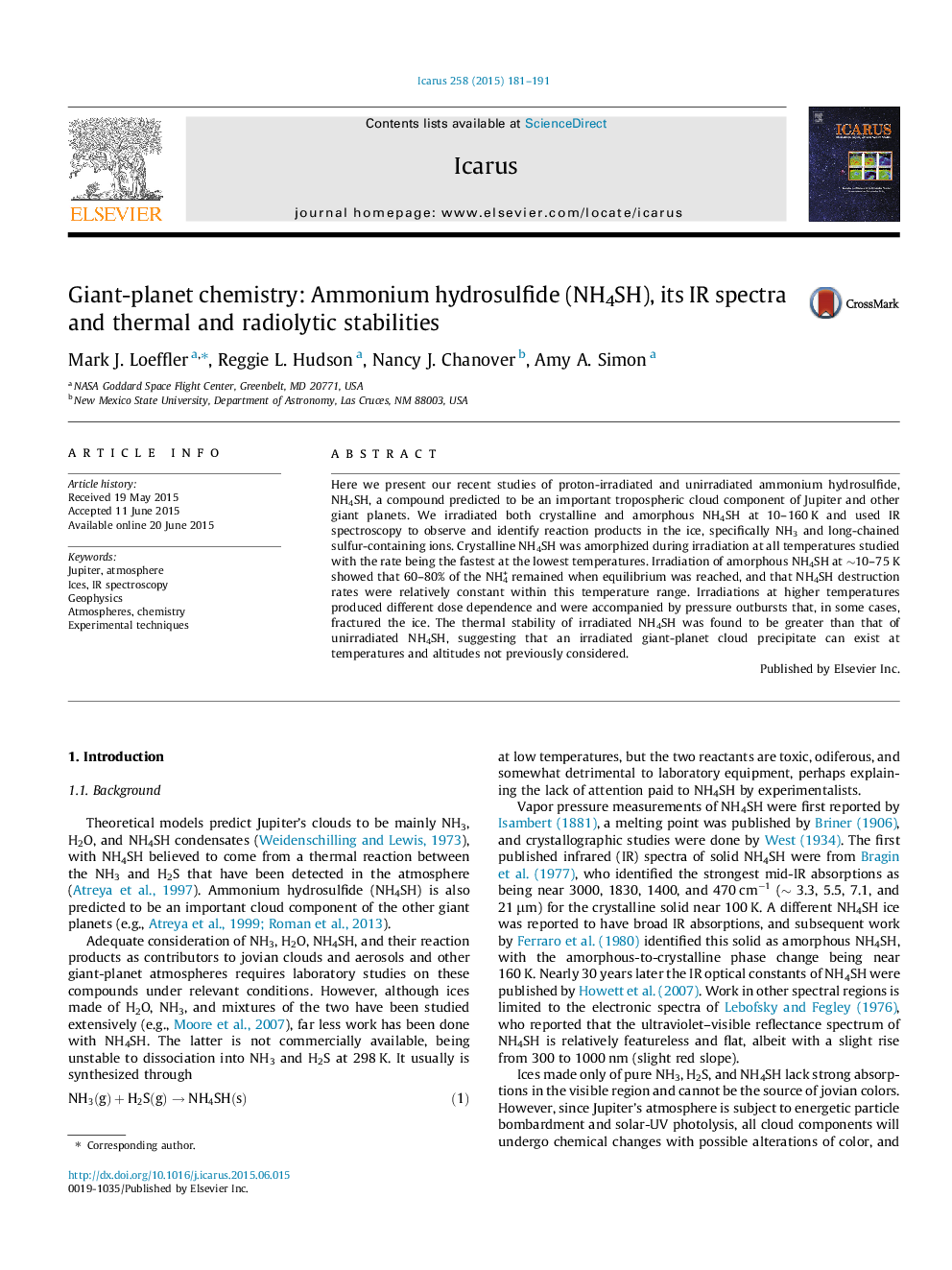| Article ID | Journal | Published Year | Pages | File Type |
|---|---|---|---|---|
| 1773008 | Icarus | 2015 | 11 Pages |
Abstract
Here we present our recent studies of proton-irradiated and unirradiated ammonium hydrosulfide, NH4SH, a compound predicted to be an important tropospheric cloud component of Jupiter and other giant planets. We irradiated both crystalline and amorphous NH4SH at 10-160Â K and used IR spectroscopy to observe and identify reaction products in the ice, specifically NH3 and long-chained sulfur-containing ions. Crystalline NH4SH was amorphized during irradiation at all temperatures studied with the rate being the fastest at the lowest temperatures. Irradiation of amorphous NH4SH at â¼10-75Â K showed that 60-80% of the NH4+ remained when equilibrium was reached, and that NH4SH destruction rates were relatively constant within this temperature range. Irradiations at higher temperatures produced different dose dependence and were accompanied by pressure outbursts that, in some cases, fractured the ice. The thermal stability of irradiated NH4SH was found to be greater than that of unirradiated NH4SH, suggesting that an irradiated giant-planet cloud precipitate can exist at temperatures and altitudes not previously considered.
Keywords
Related Topics
Physical Sciences and Engineering
Earth and Planetary Sciences
Space and Planetary Science
Authors
Mark J. Loeffler, Reggie L. Hudson, Nancy J. Chanover, Amy A. Simon,
